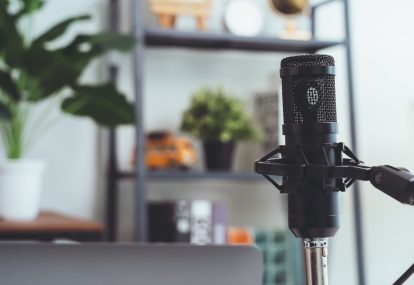While podcasting is deemed a quick and effective way to reach a new group of audience, it actually requires hard work and effort. If truth be told, podcasting requires more than just hitting the record button and talking non-stop. After the recording, you’ll need to get down and dirty for the post-production (editing, eradicating background noises, leveling the volume, etc.). In other words, you have polish everything so you’ll be able to deliver an episode that’s truly awesome.
Without doubt, post-production work can be time-consuming. Fortunately, this is where post-production software and services, like Auphonic can come in handy.
What is Auphonic?
Auphonic is an automatic post-production web service that uses signal processing and machine learning techniques. This is a free application that you can use for broadcasting, podcasting, and audiobooks, among many others.
To use it, register on the website or download the application that is available both on Android and iOS.
The application levels and restores the audio in order to produce a better-sounding podcast. It connects to Dropbox, SoundCloud, YouTube, Libsyn, Blubrry and others, in case you’re using external services. Auphonic lets you add intro and outro and stitch this automatically to the beginning and end of your podcast. It then saves your file in the specific format that you desire.
Advantages
The service is used by podcasters because of the following pros:
- It is free. Auphonic can be downloaded for free on Android or iOS. It can also be used through its website for free. There is no upfront fee when you utilize the service for your post-production needs. In other words, you’d be able to save money.
- Automatic. You don’t need to have a working knowledge of post-production in order to use Auphonic. The software is totally automatic and uses algorithm in order to clean the audio for you. It filters and reduces noise through this algorithm that’s based on its experience with user files. This is something that newbies can do while still learning the ins and outs of podcasting.
- Easy to use. The entire system is user-friendly even for beginners. Just upload your file, be it MP3, MP4, or WAV. Auphonic will take you to the step-by-step process in the noise reduction and stitching of your podcast.
Disadvantages
While Auphonic has a few pros, it also has a few downsides:
- It is not entirely free. Although it is mentioned above that Auphonic is free, it only applies to two hours of monthly content. If you exceed this number, you need to purchase credits for post-production already. Recurring credits and one-time credits are available for purchase on its website. Recurring credits are reset every month and will vary depending on the length of the recording. Price range from $11 for nine hours to $89 for 100 hours. One-time credits, on the other hand, are valid for an unlimited period of time and can be used after your free credit or recurring credit. Rates go from $12 for five hours to $150 for 100 hours. If you have longer podcast episodes, then expect to pay more for every edit. Auphonic might not be a cost-effective software for those with intensive podcast episodes.
- Does not guarantee quality. Since this is an automatic software that operates with just one click, you do not have control over the quality of its output. Its algorithm will do its work and produce the intended audio. Auphonic won’t be able to catch certain problems aside from hums, noise, and bad leveling.
- You still need to check your podcast. After you improve your recording with Auphonic, you still have to go over it again. You need to manually check if every part of your audio is clean. Auphonic can only do so much when it comes to editing your audio so you might have to edit everything again. It cannot remove filler words or dead air. Manually checking your audio is mandatory to ensure quality output.
Conclusion
Auphonic can be a good software for podcasting newbies who just want a quick run-through of their recordings. It provides automatic noise reduction and leveler. It is free if you have short monthly episodes, so you do not have to spend extra on post-production. This software will work for you if you just want some casual audio with quick fixes on its output.
If you intend to have a quality podcast however, then you need to more than just automated software. Oftentimes, you have to add human factor and edit the recording yourself to ensure it is spotless. Keep in mind that a good sounding and high-quality podcast is something a free software cannot produce.
Share this post!




